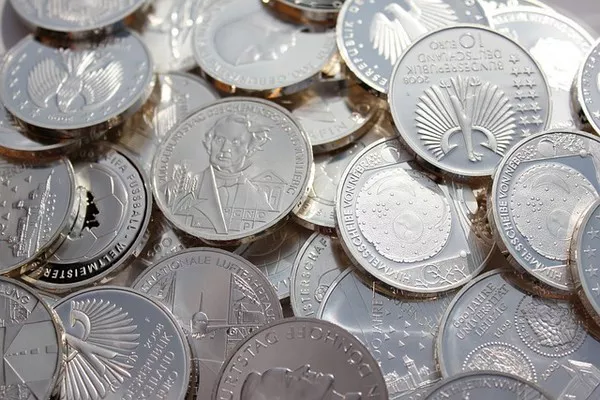In the realm of commodities and investments, silver holds a unique position. Known for its dual role as an industrial metal and a precious metal, silver’s value is influenced by a complex interplay of economic, geopolitical, and market-specific factors. Investors and analysts closely monitor these dynamics to gauge whether silver is likely to increase in value. Let’s delve into the key elements shaping the outlook for silver prices.
Understanding Silver’s Historical Performance
Silver has a rich history as a form of currency and a store of value. Its value can be influenced by historical trends, supply and demand dynamics, and global economic conditions. Examining how silver has performed in various market environments provides insights into its potential future trajectory.
Silver as a Safe-Haven Asset
In times of economic uncertainty or market volatility, investors often turn to precious metals like silver as a safe-haven asset. The demand for silver tends to rise during periods of geopolitical tension or when fiat currencies face instability. This historical role as a hedge against inflation and currency devaluation underscores its potential to appreciate in value during turbulent times.
Historical Price Trends During Economic Crises
During past economic crises, such as the 2008 financial meltdown or the COVID-19 pandemic-induced recession, silver prices exhibited both volatility and resilience. Understanding these patterns sheds light on silver’s behavior under stress and its attractiveness to investors seeking refuge from market turmoil.
Current Market Trends and Demand Drivers
To assess silver’s future value, it’s essential to analyze ongoing market trends and the factors shaping supply and demand dynamics.
Industrial Demand for Silver
Beyond its investment appeal, silver plays a critical role in various industries, including electronics, solar energy, and healthcare. The growth of these sectors directly influences silver demand. A surge in green technologies like electric vehicles and solar panels is expected to boost silver’s industrial demand, potentially driving prices higher.
Impact of Technological Advancements
Advancements in technology continue to expand silver’s industrial applications. Innovations in 5G technology, electric vehicles, and renewable energy infrastructure are anticipated to fuel sustained demand for silver in the coming years. Understanding these technological shifts is key to forecasting silver’s future value.
Investment Demand and Speculative Activity
Investor sentiment and speculative trading can significantly impact silver prices. The rise of exchange-traded funds (ETFs) and retail investment platforms has democratized access to silver markets, amplifying price movements based on investor behavior.
Role of Monetary Policies and Inflation Expectations
Monetary policies, particularly those involving interest rates and quantitative easing, influence investor perceptions of inflation risk. Silver, historically viewed as a hedge against inflation, often sees increased demand during periods of anticipated currency devaluation.
Supply-Side Factors and Mining Trends
Silver’s value is also influenced by supply-side dynamics, including mine production, recycling rates, and geopolitical factors affecting mining operations.
Global Silver Production Trends
Fluctuations in silver production, driven by mining output and operational challenges, impact supply levels. Shifts in mining techniques, environmental regulations, and geopolitical tensions can constrain or bolster silver supply, influencing its market value.
Environmental and Regulatory Impacts on Mining
Environmental considerations and regulatory policies play a crucial role in shaping silver mining operations. Sustainability initiatives and heightened environmental standards may affect the cost of production and ultimately impact silver prices.
Geopolitical and Macro-Economic Influences
Silver, like other commodities, is subject to broader geopolitical and macro-economic factors that can exert both short-term and long-term effects on its value.
Geopolitical Tensions and Market Sentiment
Geopolitical events, such as trade disputes or conflicts, can create market uncertainty and drive investors towards safe-haven assets like silver. Understanding these dynamics requires monitoring global geopolitical trends and their potential impact on investor sentiment.
Macro-Economic Indicators and Currency Movements
Macroeconomic indicators, including GDP growth, unemployment rates, and currency fluctuations, can sway silver prices. The strength of the U.S. dollar, in particular, inversely correlates with silver’s value due to its impact on international trade and investor perceptions.
Outlook for Silver in the Current Economic Landscape
Forecasting silver’s future value demands a comprehensive analysis of these multifaceted factors. While silver’s role as a safe-haven asset and its industrial utility bode well for its long-term value, short-term price fluctuations are inevitable due to market dynamics.
Long-Term Growth Potential
Silver’s growing industrial applications, coupled with its historical role as a monetary metal, position it favorably for long-term value appreciation. The expansion of renewable energy and technology sectors is likely to sustain demand for silver, supporting its upward price trajectory.
Risks and Uncertainties
Despite its promising outlook, silver investments are not without risks. Price volatility, supply chain disruptions, and shifts in investor sentiment can lead to sudden price swings. Assessing these risks alongside potential rewards is essential for investors considering silver as part of their portfolio.
See Also Warren Buffett’s Silver Holdings: A Deep Dive
Conclusion
In conclusion, silver’s value is influenced by a complex interplay of economic, industrial, and geopolitical factors. Understanding historical performance, current market trends, and future demand drivers is critical to assessing whether silver is likely to increase in value. While silver’s dual nature as an industrial metal and precious metal offers diversification benefits, investors should approach silver investments with a nuanced understanding of its unique market dynamics and associated risks. By staying informed and monitoring key indicators, investors can make informed decisions regarding the potential role of silver within their investment portfolios.


